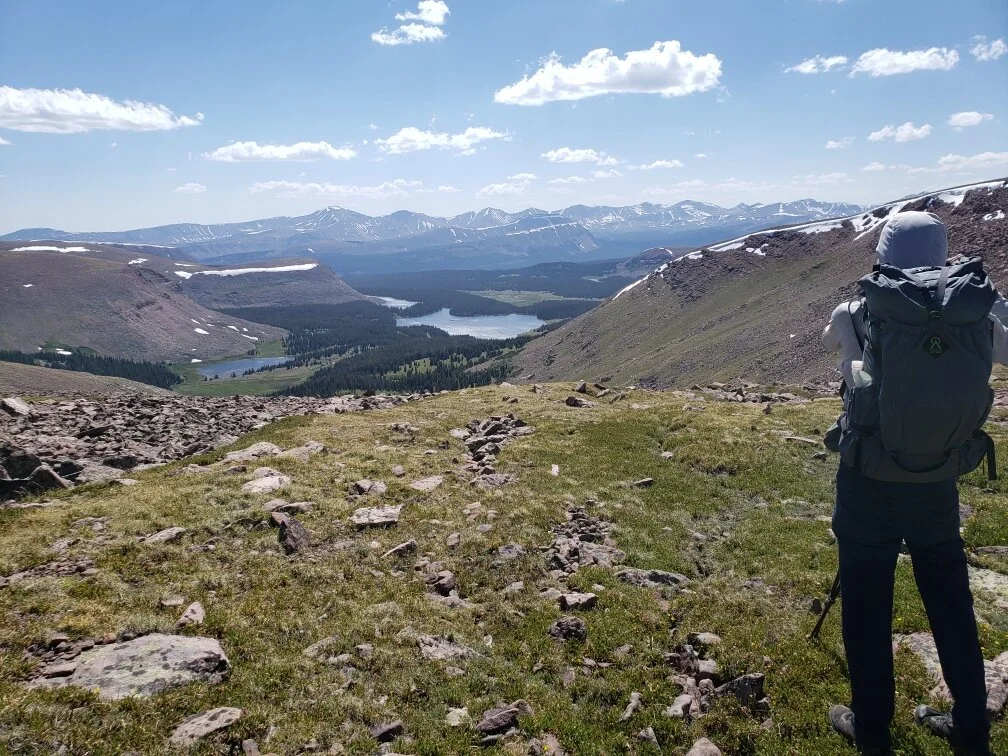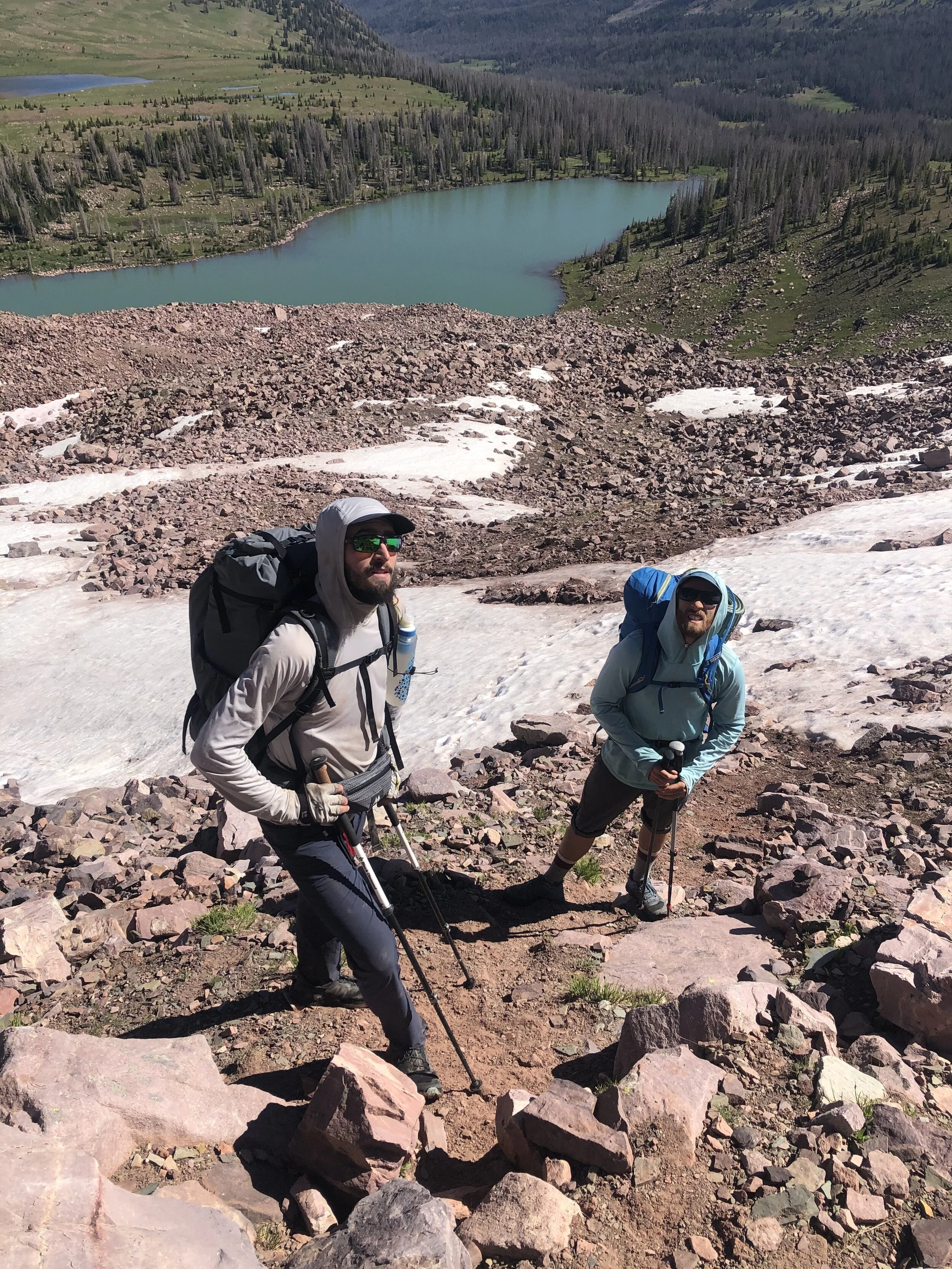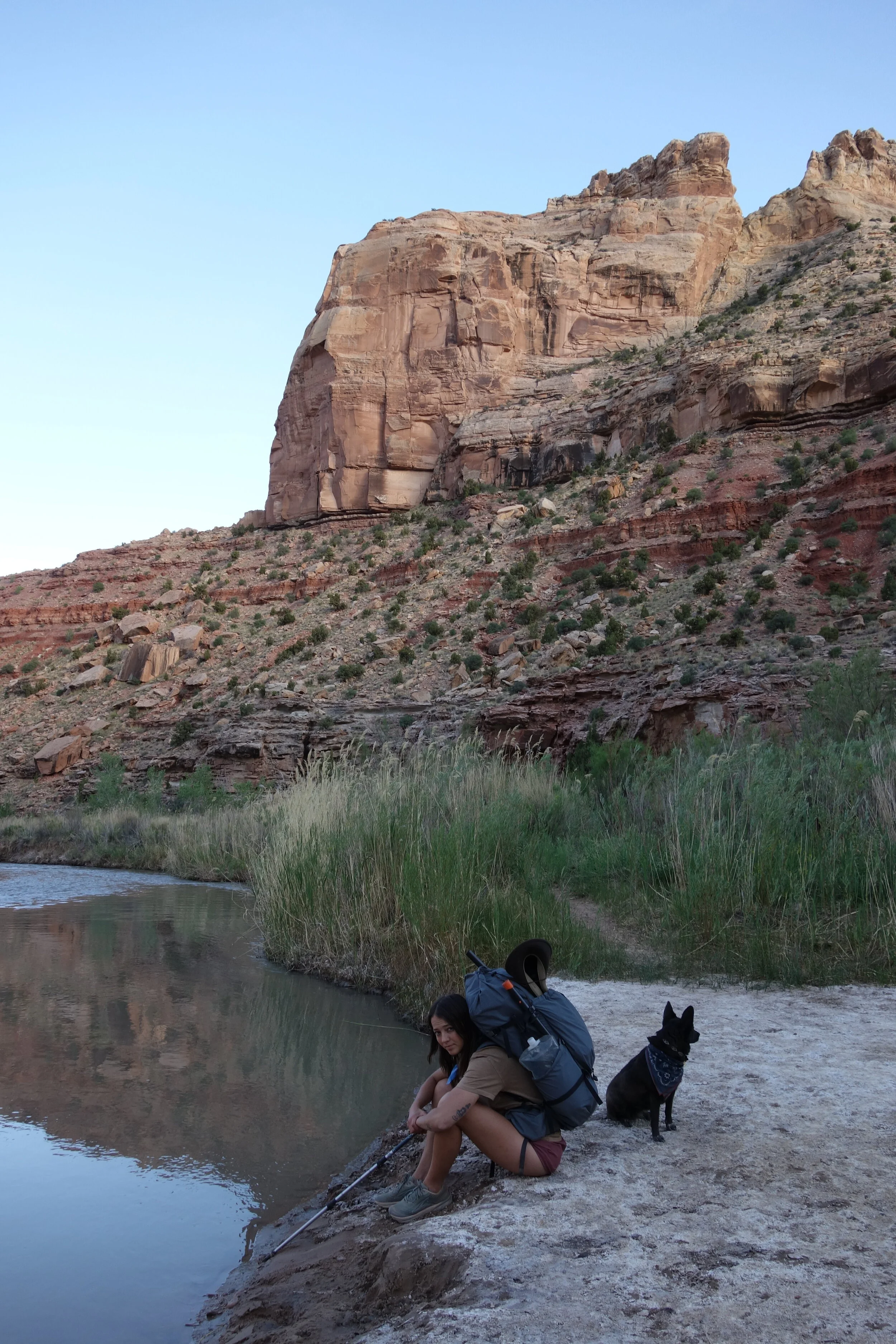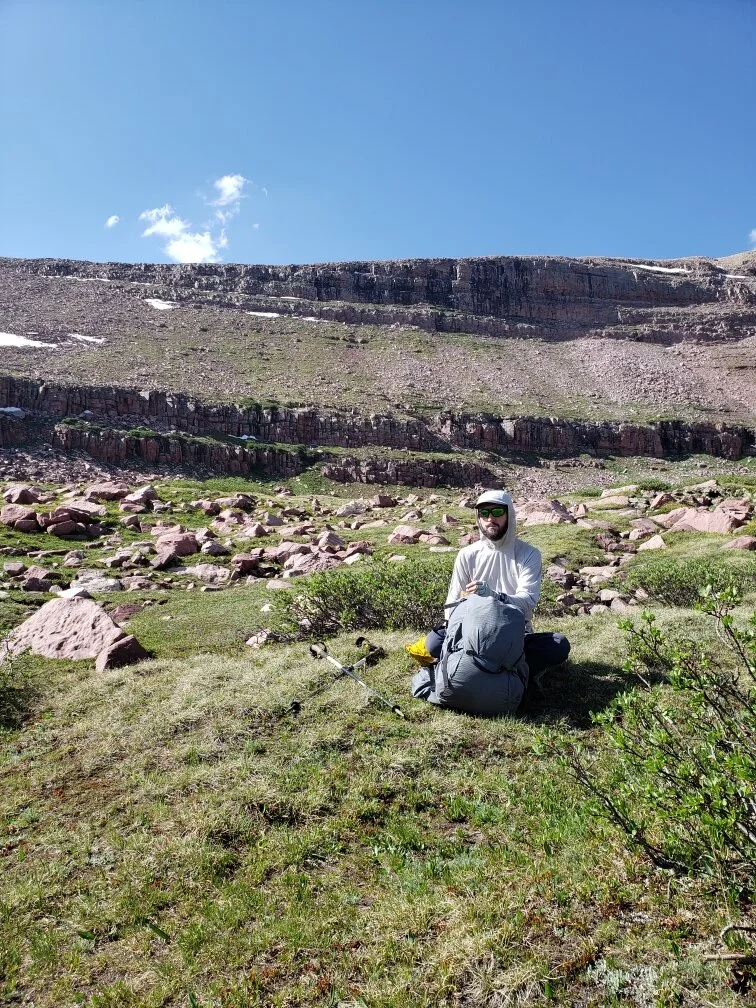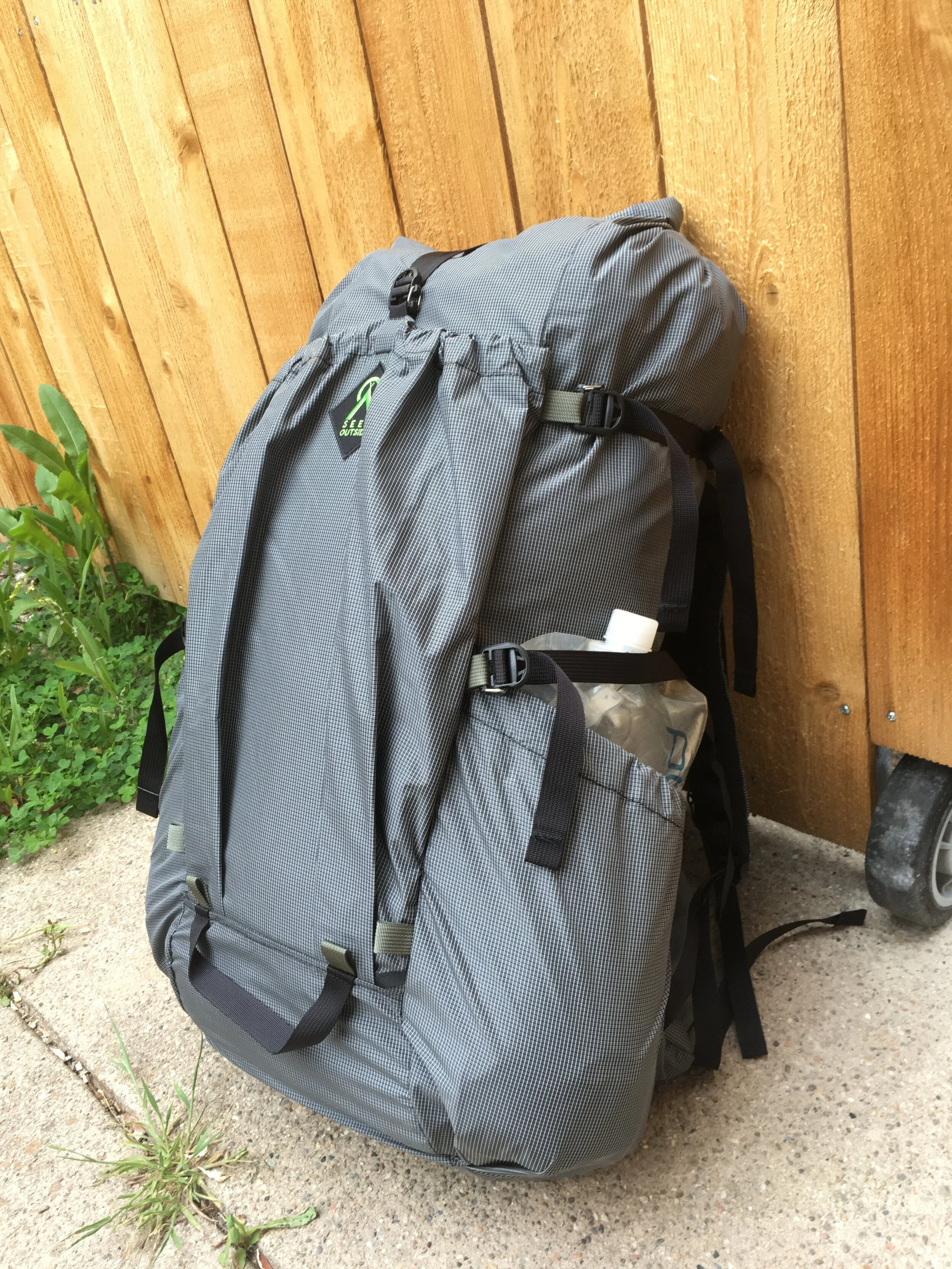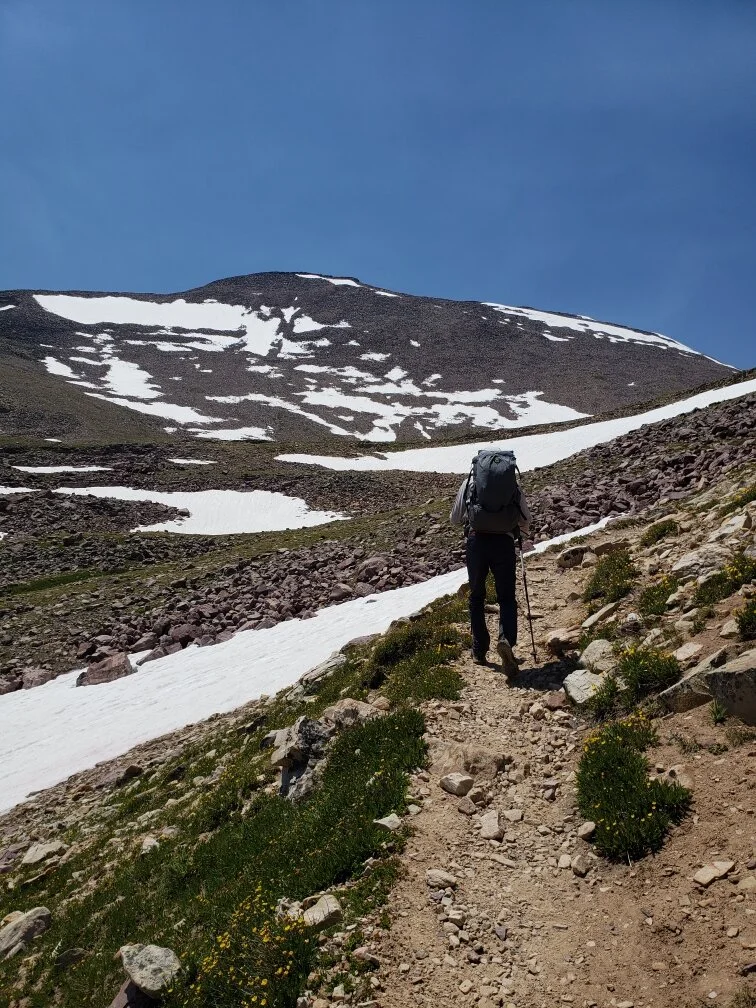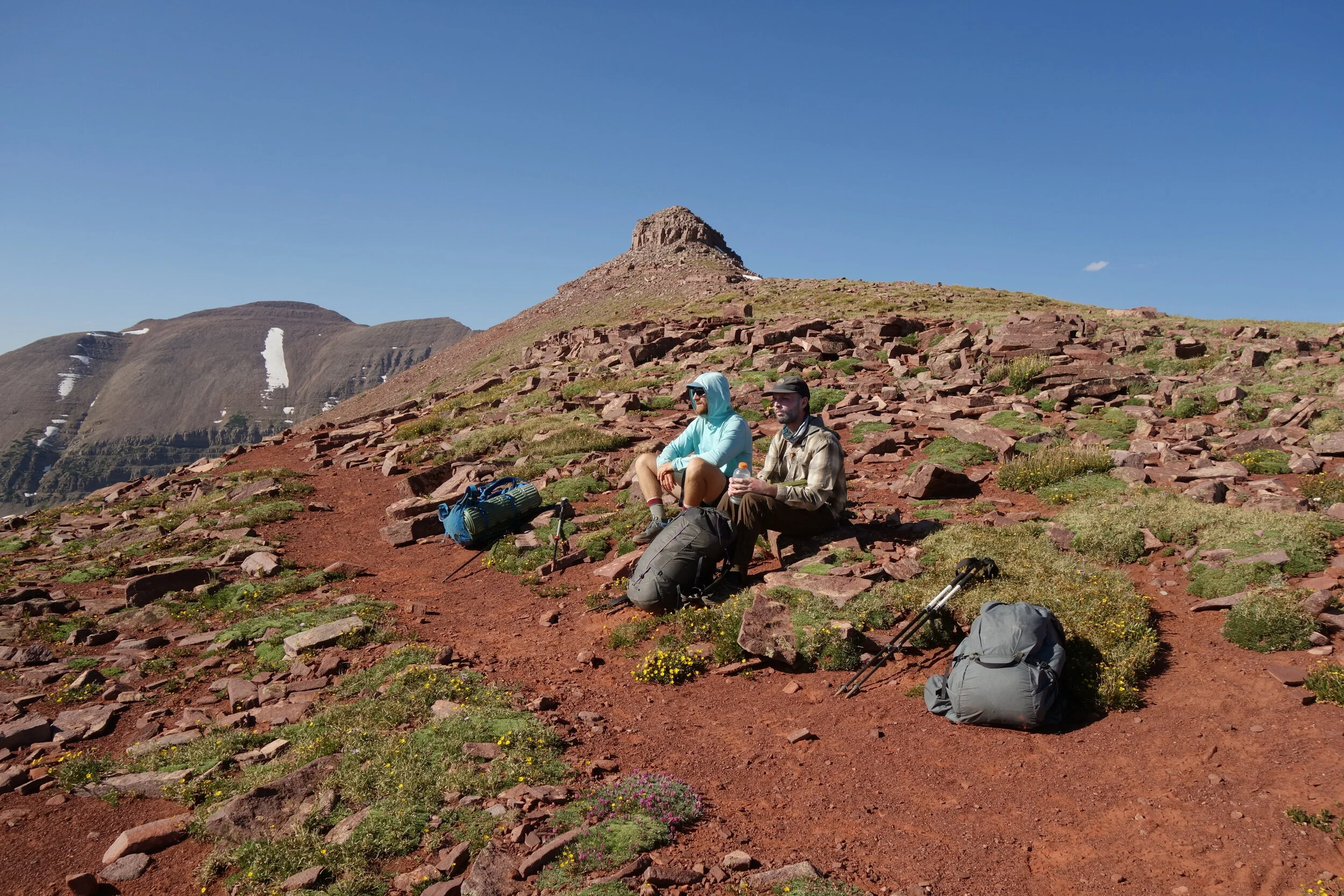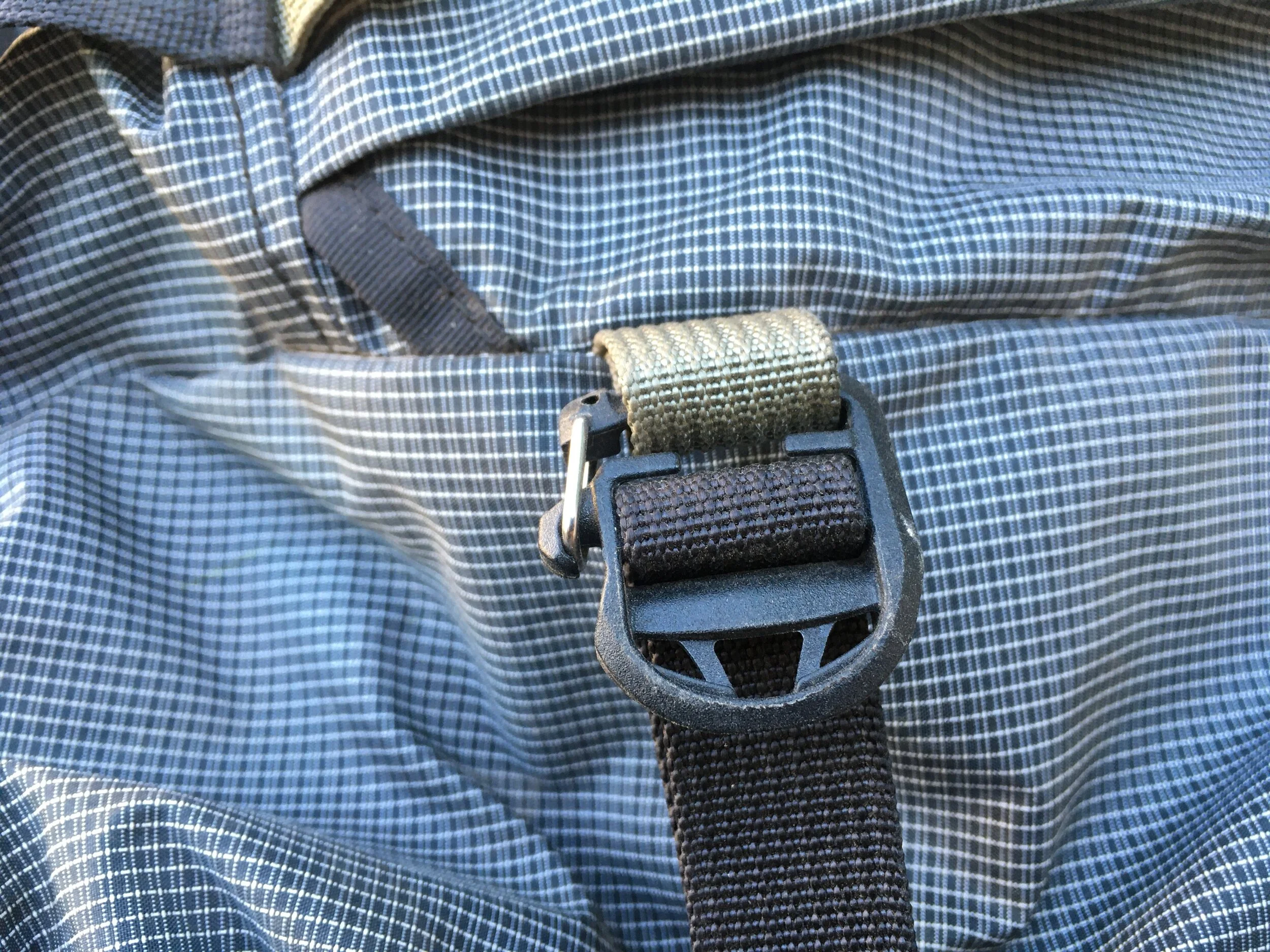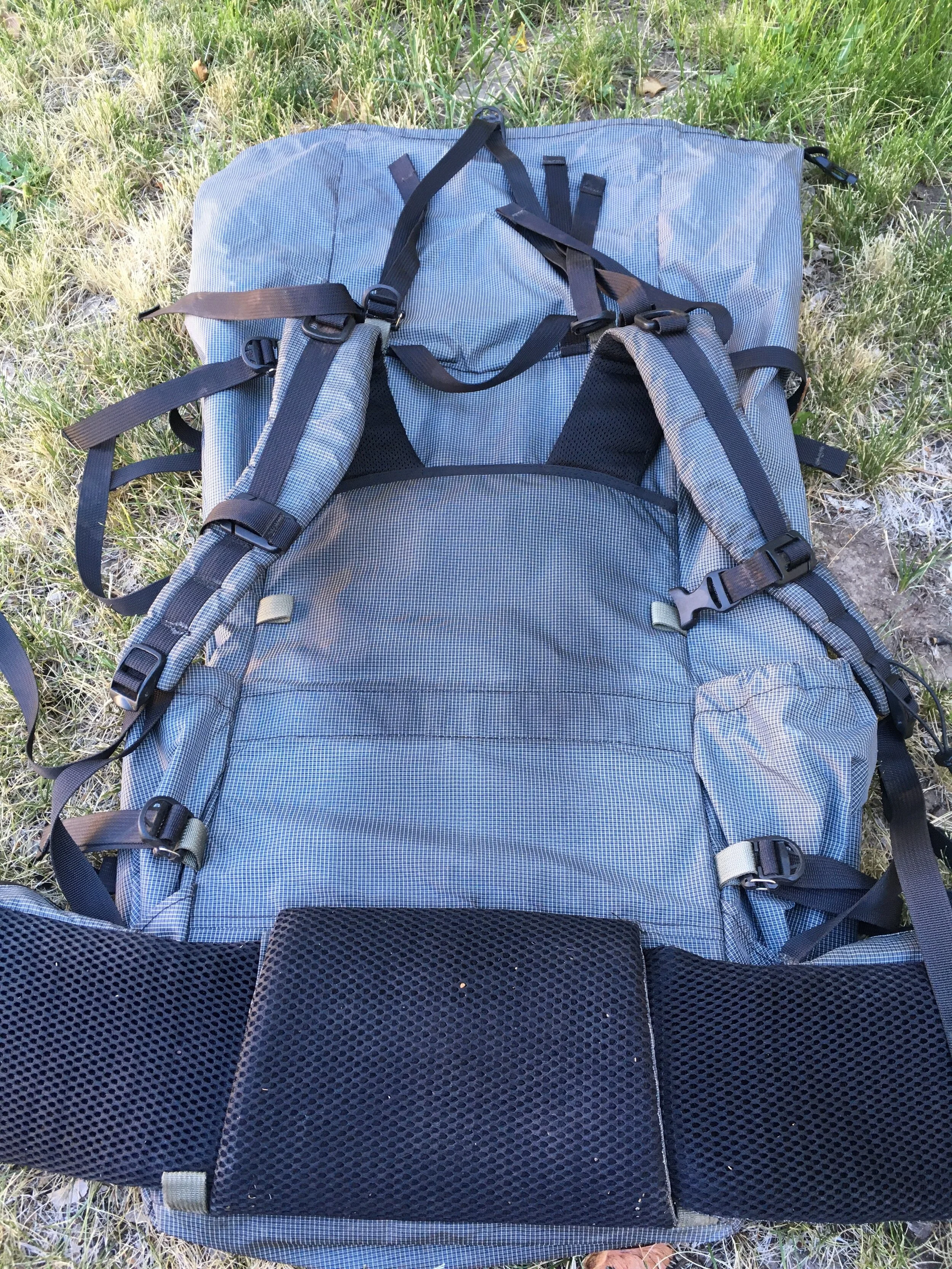October 2020 Update: I’ve put a small ULA hip belt on this pack and it is awesome! It’s much stiffer than the SO belt and allows weight to transfer to hips much better. Highly recommended switch.
Anyone know which pass this is?…
OVERVIEW OF EXPERIENCE
I’ve used the Seek Outside Flight One Solid Spectra backpack on three trips now including the Uintas Highline Trail. The Highline was 104 miles over the course of 6 days, making it a great test for this pack. I don’t know my exact starting weight but I’m guessing it was around 30lbs with a few liters of water and a grapefruit. It felt heavy with 50% of the weight on my shoulders, so I ate the grapefruit right away. But as much as I messed around with the adjustments I couldn’t get the weight distribution right. It remained between 55/45 and 50/50 hips/shoulders for the remainder of the trip, even at the end when my pack weight was below 20lbs.
When we found camp that first day, the first thing I did was dump everything out of my pack, remove the horizontal stay, repack everything, and pace back and forth through the meadow. The weight distribution was more like 55% hips, 45% shoulders without the stay, and the load was closer to my back, which was much more comfortable. I hiked this way for the remainder of the trip, just wishing I’d pulled the stay out before the trip. It turned out to be 1.8oz of unnecessary weight.
Another pass to guess the name of…
WHAT I LIKE
Fabric
On first impression I was REALLY into the spectra fabric. Bushwhacking through willow-choked drainages in Grand Staircase-Escalante and the tamarisk-choked San Rafael River corridor left no noticeable wear on the pack. In theory, strands of spectra sit above the nylon so they take all the abuse, leaving the nylon below mostly untouched. This seems like a great fabric design, and also seems reasonably priced for what it is. I have heard reports, however, of people shredding their Spectra Flights, so look around to find out other opinions on this fabric.
Modular Straps
I love the modular straps with gate-keeper buckles. I don’t need all of them and have always left some at home. As a result my pack is right around 36oz (and maybe closer to 34oz without the horizontal stay). With all the straps attached it’s more like 38oz. The gatekeepers also give me peace of mind because they offer abundant hardware redundancy. I could easily use one of these to fix other broken side-release buckles or ladderlocks on other parts of the pack, should I accidentally step on one.
Hip-belt Pockets
The giant hip-belt pockets are some of the best I’ve seen. I carried a map, gaiters and sungloves in one (when I wasn’t using them), and sunscreen and my phone in the other. And they weren’t even full! I could have fit a few snacks in there too. While I would like a different hip-belt design, the size of these pockets may have to decrease as a result. Depending on the change, I could be totally fine with that.
Side Pockets
2L Platy in sidepocket.
The deep side-pockets fit full 2L Platypus bottles easily. This is a great feature for hauling water through willows and tamarisk in southern Utah. The spectra protects the bottles from being gouged by sharp sticks or abraded by sandstone.
Rear Pocket
The rear pocket is quite large. I was able to fit snacks and raingear (jacket, pants, gloves) in there with tons of space left over. The sewn-in shock cord at the opening keeps the pocket mostly closed, and it doesn’t flop open. Some folks might prefer a mesh rear pocket for wet gear or for drying out wet socks. I’m not sure if I have a preference here, but it might be nice if mesh was offered as an option.
UNCERTAINTIES, OR MAYBE CONTINGENCIES
Flight on the left. High Uintas Wilderness.
The fact that I couldn’t get more weight off my shoulders is not an easy problem to diagnose and is contingent on a number of things. I began by pointing my finger at the hip-belt which seemed larger than I would have liked. It attaches to the pack with strips of Velcro hidden behind a decently-padded lumbar pad. When I adjust the belt to my 33” iliac crest circumference there is a ton of overlap (see photo). Some weight could be saved and some rigidity preserved by either retaining the Velcro attachment and making the hip-belt all one piece, or just sewing the hip-belt to the pack. I have now replaced this hipbelt with a Small ULA hipbelt and it is great! It’s much stiffer than the SO belt and allows weight to transfer to hips much better. I highly recommended the switch. Unfortunately that’s an extra $40 to spend on top of a $320 pack. I’ve exchanged some emails with Kevin Timm of Seek Outside and he said they’re weighing some options. Likely they will be making a smaller hipbelt when the busy season is over. I don’t know if it will remain adjustable like the current belt or be a solid piece like ULA. Either way I salute their interest in customer feedback and willingness to implement changes to continue to make things better.
Hip-belt velcro overlap.
The Velcro attachment of the belt to the pack is secure, but it does seem to collapse a bit when the pack is loaded. The advertised torso length of 22” seems to drop to an effective torso length of something less than that. I won’t attempt to guess at how much length is lost. This leads us to the next contingency. A slight hip-belt collapse would matter a lot less (or not at all) if I was using the taller 24” pack. I want to be clear that I don’t think the hip-belt design is fundamentally a problem, but that it’s a problem for my waist size AND I bought the wrong size pack. Weight distribution between the hips and shoulders is obviously contingent on using the right pack size for the job. Maybe that should go without saying, but I guess it doesn’t. The sizing chart on the website tells me that with my 19.5” torso I should have been fairly comfortable with around 35lbs in my 22” pack. But when I had around 30lbs in there it was not particularly comfortable. Once I got closer to 25lbs it felt better. I’d like to try the larger pack to compare. Additionally, I probably don’t even need a frame in my pack if the weight distribution is going to be 50/50. This points to the importance of correctly-sized packs for larger loads. Only if the pack is sized correctly can the loadlifters function as they’re supposed to.
Another observation
The 22” Flight fits Hallie better than me so she may end up keeping it.
After about 80 miles the pack developed a squeak. It was near my right shoulder, probably where the top of the frame rests inside the frame sleeve area. Eventually I didn’t notice it anymore, but if that’s a consistent issue I could see it bothering some people. It’s possible that leaving in the horizonal stay or tightening the straps that attach the frame to the bag could have fixed this sound. I tested neither, so I can’t say there isn’t an easy solution, there likely is.
CONCLUSION
I feel somewhat inconclusive about this pack. This is due mainly to the fact that I chose the wrong size. My experience of being unable to shift more weight to my hips likely would be solved by using the 24” torso version of the pack. At the same time, I do believe a more secure hip-belt design could also facilitate weight-transfer from shoulders to hips, even with the 22” pack. I don’t know what that design would look like. Maybe a simplified version of the hip-belts on their standard frame packs like the Divide 4500. Or maybe something like the Rogue Panda Zoro hip-belt, which attaches only at the bottom of the pack. Or something like the ULA belt previously mentioned.
To Reiterate:
The main thing I’d change on this pack is the hipbelt. I don’t love the mesh which allows pine-needles to get stuck in it. And it’s just a little too big for my 33” waist. I’d happily give up some hip-belt pocket volume to have a hip-belt that didn’t require so much overlap. It would save a little weight too. Let me be clear, I CAN crank it down and make it feel secure, but it just doesn’t feel as good (to me) as a sewn-in belt like that on a Hyperlite Mountain Gear Southwest 3400, or the belt on my Divide 4500, which is attached securely at the bottom of the pack. Both of these designs seem superior to the adjustable velcro design in my opinion.
Aside from that issue Seek Outside pretty much nailed it. This pack is so close to perfect it’s not even funny.

